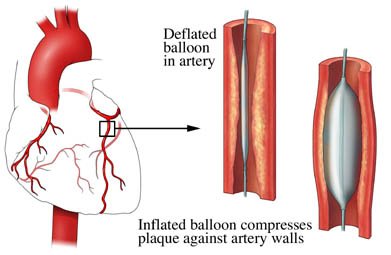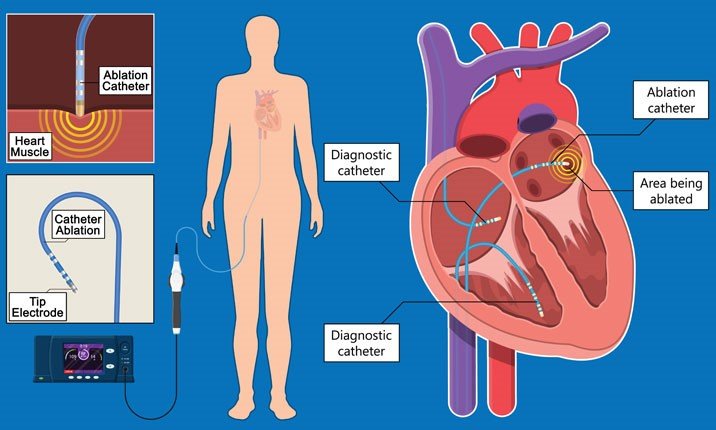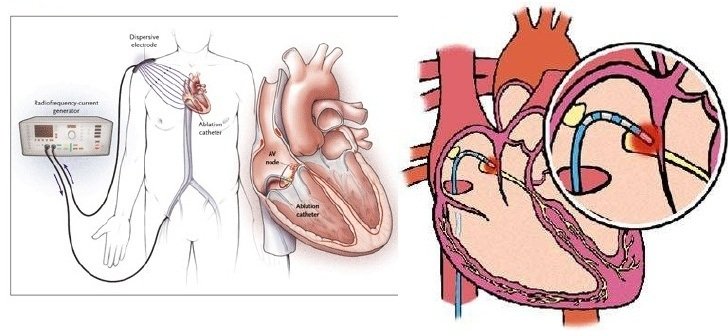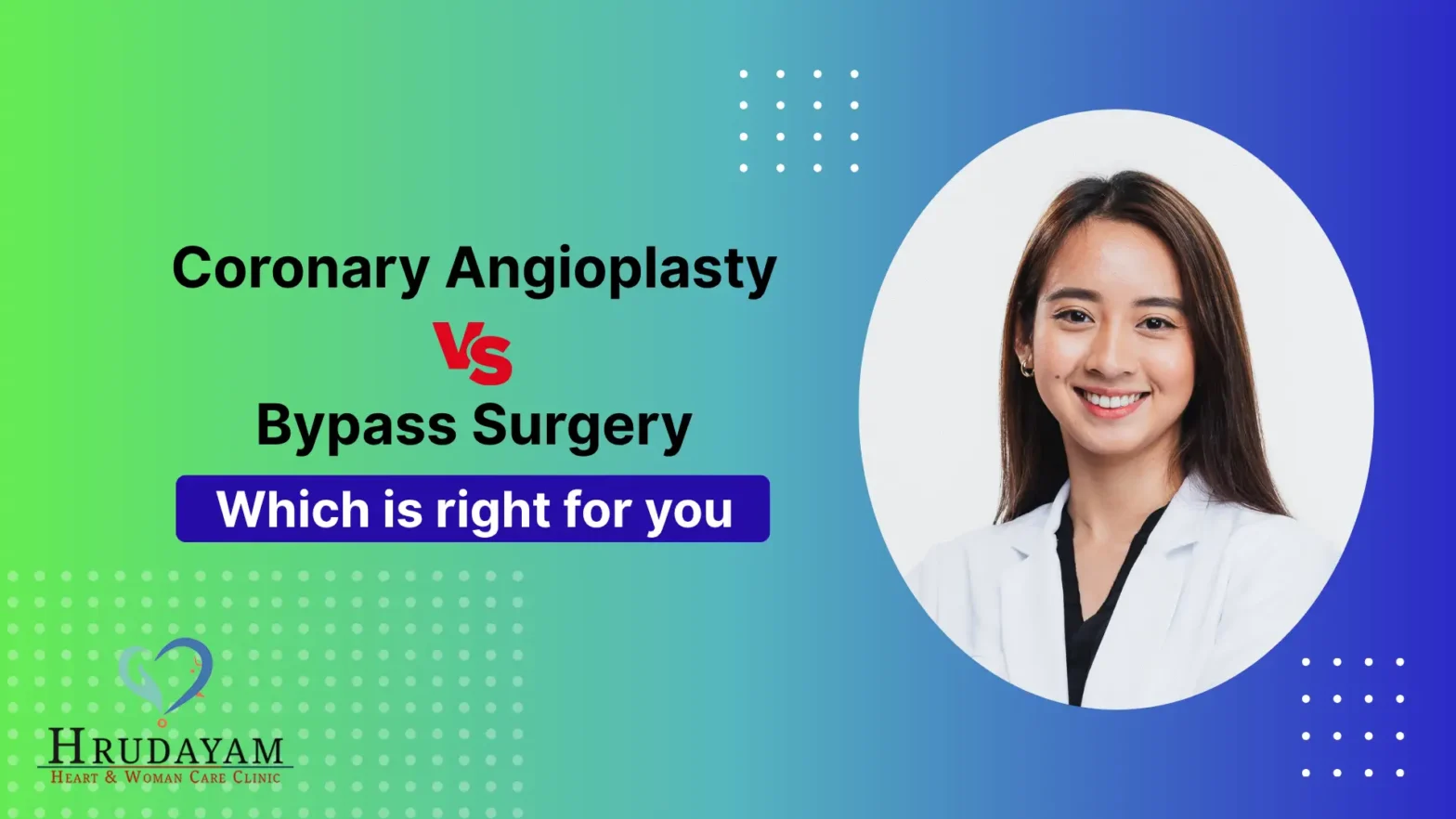Coronary Angioplasty Procedure in Nagpur

Coronary angioplasty is a minimally invasive technique of abdominal artery angioplasty, which is used to treat coronary arteries that are obstructed or constricted and it is the most appropriate technique used by doctors for the treatment. In simple words, A treatment for the enlargement and opening of narrowed or blocked arteries which supply your heart muscle is coronary angioplasty and stenting.
Procedure of Angioplasty
The Coronary Angioplasty procedure done in various process:
Access:
Access artery, insert catheter in groin/wrist, apply anesthetic for comfort. Treats blockages/narrowing in arteries.
Imaging and Evaluation:
A contrast dye is injected through the catheter, and X-ray imaging is used to visualize the coronary arteries. This helps the cardiologist identify the location and severity of the blockage.
Balloon Inflation:
Balloon-tipped catheter advances to blockage, inflates, widening artery, restoring blood flow by pressing plaque against walls.
Stent Placement (if necessary):
Stent inserted after balloon inflation keeps the artery open, a wire mesh tube locks in place and pushes plaque.
Recovery:
Angioplasty’s crucial aspect is recovery, monitoring the patient’s ability to resume daily activities. Cardiac rehab can aid healing.
Why It’s Done ?
A medical procedure for the repair of restricted or obstructed blood vessels is angioplasties, also known as balloon angioplasty and coronary Angioplasty. It’s about placing a catheter in the artery and using it to draw your guide wire towards the site of injury. The narrowed segment is then advanced and inflated with a specialized balloon catheter, which forces the plaque or blockage against the arterial walls to widen the conduit and improve blood flow.
Benefits
1. Minimally invasive procedure with smaller incisions and reduced recovery time.
2. Immediate relief from angina symptoms and reduces the risk of heart attack by opening blocked arteries and preventing blood clots.
3. Long-term benefits, including stabilization of coronary artery disease and potential life expectancy improvement.
Risks Involved
Coronary angioplasty treatment carries risks: artery damage, bleeding, blood clots, infection, and allergic reactions to dye. Restenosis can occur, and rare cases may have heart attack, stroke, or cardiac perforation. Monitoring and quick medical attention can help reduce risks.
Types of Angioplasty
There are also other several types of angioplasty test procedures based on the targeted vessels:
Peripheral Angioplasty
Treats narrowed arteries in the legs, arms, and other peripheral areas.
Carotid Angioplasty
Addresses stenosis in the carotid arteries, reducing the risk of stroke.
Renal Angioplasty
Dilates narrowed arteries in the kidneys to improve kidney function.
Balloon Angioplasty
Utilizes a balloon catheter to widen the narrowed artery.
What is done after the procedure of Angioplasty?
All patients are carefully followed after angioplasties for any complications. The use of medicinal products to treat the pain and avoid blood clots is recommended. Care instructions, including wound care, medication management and lifestyle changes are given to patients after the angioplasty process. Follow-up appointments are scheduled to assess progress and ensure ongoing care.
In Nagpur, coronary angioplasty is a widely available and advanced medical procedure used to treat blocked coronary arteries. Skilled cardiologists perform the minimally invasive technique, which involves inserting a balloon or stent to open narrowed arteries, restoring blood flow to the heart, and improving patients’ cardiac health. And the Coronary Angioplasty cost in Nagpur is very efficient. Dr. Chetan Rathi is one of the Heart Specialists who perform Coronary Angioplasty in Nagpur.
Our Medical Services

ECG
An electrocardiogram (ECG) is one of the only and speediest tests utilized to survey the heart. Anodes (small, plastic patches that stick to the skin) are set at certain spots on the chest, arms, and legs.

2D Echo
A two-dimensional Echocardiogram or 2D Echo test is a demonstrative test that employs ultrasound waves to evaluate the working of the heart.

Holter Monitoring
Holter monitoring measures your heart activity over an extended period, usually between 24 and 48 hours. Basically, a Holter Monitoring is a portable device which records the heart’s electrical signals.

BP Monitoring
Each time your heart beats, it pumps blood into your arteries. A blood pressure measurement may be a test that measures the force (pressure) in your arteries as your heart pumps.

Coronary Angiography
Coronary angiography diagnoses and evaluates coronary artery blockages. Contrast dye is injected into arteries, enabling X-ray imaging to visualize blood flow and identify narrowing or blockages.

Best Cardiologist in Nagpur
Introducing Dr. Chetan Rathi, a distinguished Cardiologist in Nagpur, whose eminence transcends the realm of medical proficiency.

Electrophysiology Study
An Electrophysiology Study (EP study) is a test utilized to assess the heart’s electrical framework and check for abnormal heart rhythms. The natural electrical impulses coordinate the contractions of different parts of the heart.

Radiofrequency Ablation
Radiofrequency Ablation (RFA) is a minimally invasive medical procedure that uses high-frequency electrical currents to generate heat, effectively destroying abnormal tissue or cells.

Pacemaker Implantation
Pacemakers are medical devices designed to support and regulate the electrical system of the heart, ensuring it functions properly. This medical procedure entails the insertion of a small device into the chest region.

ICD Implantation
An Implantable Cardioverter-Defibrillator (ICD) is a life-saving device that plays a crucial role in monitoring and regulating heart rhythms. It consists of a pulse generator and leads implanted in the heart.

CRT_P & CRT-D Implantation
CRT implantation is a process in which technological instruments known as CRT-P and CRT-D where p stands for pacemaker and d stands for defibrillator.

Valvuloplasty
A balloon mitral valvuloplasty is a process to extend a restricted heart valve and improve blood flow. The heart valves handle how blood drives through the heart.
Our Achievements in Numbers
Happy Patients
Years of Overall Experience
Specialisations
Hospital Associations
Awards & Recognition
Patient Testimonials
Dr Chetan Rathi sir is good cardiologist. I visited him many times with my family and friends for consult about issues related with cardiology.
Our Videos




Our Blog
 Coronary Angioplasty vs Bypass Surgery: Which Is Right for You?
Coronary Angioplasty vs Bypass Surgery: Which Is Right for You?
When it comes to heart treatment, many people feel confused about Angioplasty versus bypass. While both help open blocked heart arteries, the way they work is very different, which is why doctors take time to explain the difference between angioplasty and bypass surgery in simple words. In this guide, you will understand both treatments in… Continue reading Coronary Angioplasty vs Bypass Surgery: Which Is Right for You?
Read More Which Muscle is the second heart of human body
Which Muscle is the second heart of human body
Many are astonished when they hear that we have something called the second heart of the body. People often ask: what is the second heart of the body, which is called second heart of the body, or which is the second heart of human body? Well, this “second heart” is not a real heart, but… Continue reading Which Muscle is the second heart of human body
Read More The Difference Between a Cardiologist and a Cardiac Surgeon
The Difference Between a Cardiologist and a Cardiac Surgeon
The heart is a very crucial organ in the human body. If anything happens to it, two primary specialists assist cardiac surgeons and cardiologists. Although both specialise in heart issues, their jobs differ significantly. It is a good idea to learn the difference between cardiologist and cardiac surgeon so that you know whom to see… Continue reading The Difference Between a Cardiologist and a Cardiac Surgeon
Read More



